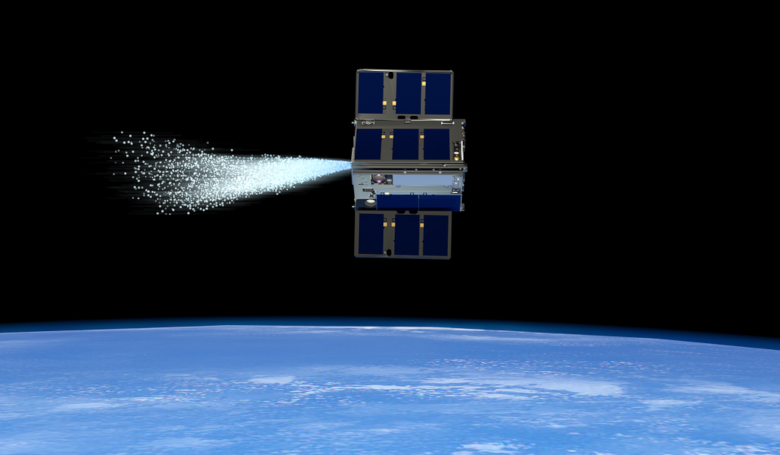High in the skies 8.8 kilometres above Earth, are two tissue box-sized machines changing the way the next generation of CubeSats could operate in future missions. Simply called OCSD-B and OCSD-C, the twin spacecraft are the first to issue commands by “talking” to one another via radio and to propel themselves through space with water.
This display of engineering marvel is part of NASA’s Optical Communications and Sensor Demonstration (OCSD) mission and it has just helped to demonstrate the first coordinated manoeuvre between two CubeSats in low-Earth orbit.
"Demonstrations such as this will help advance technologies that will allow for greater and more extended use of small spacecraft in and beyond Earth-orbit," said Roger Hunter, program manager of the Small Spacecraft Technology program.
The 2.5 kilogram (5 pounds), 10x10x17 centimetre CubeSats are the second stage in a carefully crafted series of missions designed to demonstrate two significant capabilities that will be of value for the expanding small satellite industry: demonstrating high-speed optical transmission of data and proximity operations between two small satellite – the latter of which the duo just ticked off as successfully completed.
Collecting data while whizzing round Earth is one thing, but a common challenge when developing small-satellite-borne Earth Observation (EO) missions is getting that data to the ground. Transmitting data via radio frequencies (RF) has long been the method to get information to the ground, but the volume of data collected by image-greedy satellites can overwhelm most conventional RF downlink systems.
For this reason, laser downlinks have now become popular. However, not only must the onboard laser need to point its beam with sufficient accuracy and precision so that the target can receive as many photons as possible into the collector, another seemingly innocuous Earthly feature can cause problems; cloud cover. If just one satellite is responsible for transmitting data home, the window of opportunity to relay the information back can be lost until the next available opportunity if unwanted clouds get in the way.
But if you had a few CubeSats all operating together as a swarm, then many of the problems associated with data download can be overcome. For that to happen though, you need all of the CubeSats to be able to fly together and coordinate their movements in space. This is a very tricky task but OCSD-B and OCSD-C are helping further that cause.
In this recent demonstration, the coordinated manoeuvre was issued by one spacecraft as it told the second to activate its thruster and close the gap between the two. Although it was choreographed by human operators on the ground, it shows that it is possible for a series of propulsive manoeuvres to be planned with onboard processing and completed cooperatively by the two craft.
The demonstration didn’t stop there though, as after proving that the CubeSats could talk cooperatively to one another, the one being told to move did so by firing its thrusters powered by steam.
Aside from all of the communications equipment stowed onboard this diminutive craft, the engineers have also show-horned in a steam-powered thruster. This method of propulsion requires a heat input of 2.9 W/mN to vapourise the water and support continuous thrust and to help keep the propellant tank warm enough – it must maintain a 45ºC minimum temperature – so that the vapour doesn’t freeze before it can used as fuel.
OCSD-B and -C follow on from OCSD-A, a risk-reduction "Pathfinder" mission launched in 2015, designed to fine-tune its successive counterparts. And, in the year and a half OCSD-B and -C have been in space (they launched in November 2017), the thrusters have been used to manoeuvre the two satellites to within six metres (20 feet) of one another.
”The OCSD team is very pleased to continue demonstrating new technical capabilities as part of this extended mission, over 1.5 years after deployment," said Darren Rowen, director of the Small Satellite Department at The Aerospace Corporation. "It is exciting to think about the possibilities enabled with respect to deep space, autonomously organising swarms of small spacecraft.”











